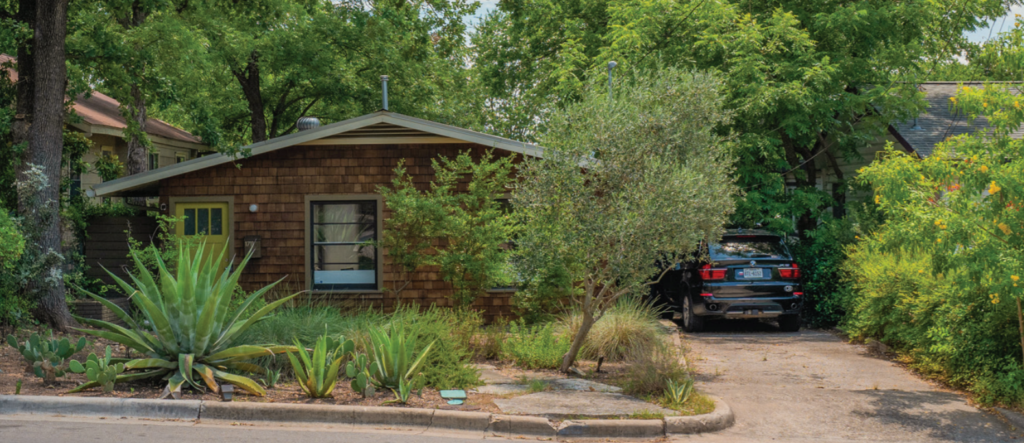
Last month, the Board of Adjustment postponed the case for the property at 1711 Waterston Ave. in order for the property owners to cobble together a case presenting a valid hardship. This month, the owners of the Clarksville bungalow returned before the board on Aug. 10 and brought their neighbors as a basis for their hardship case.
Ryan Bollom, the architect on the project, told board members that the homeowners, who are keen on preserving the tree canopy on their lot, have planned a single-story, 1,482-square-foot addition to the existing 818-square-foot home. To accomplish this design, the owners are requesting variances to decrease the side setback on one side of the home from 5 to 3.5 feet to accommodate a carport, allow the building cover to increase from 40 to 44 percent, and raise the impervious cover limit from 45 to 49 percent. These requests, Bollom said, were “dramatically” reduced from what he presented last month.
To justify the pruned-down request, Bollom told the board that the owners selected this design in order to preserve the 12 trees surrounding the lot – though only two of the trees are actually on the property in question. “This design proposal is trying to preserve their neighbors’ trees,” Bollom explained.
While the board unanimously approved the variance requests with the condition that the carport remain open on all sides, Board Member Darryl Pruett said, “I have a real hard time thinking about trees on someone else’s lot as a hardship on your lot.”
Board Member William Hodge similarly said, “Buying a property and having great intentions but not following the rules does not constitute a hardship.”
Board Member Michael Von Ohlen pointed out that trees are protected by the city, and under the bylaws of the Board of Adjustment tree preservation may be considered a hardship. The code, he said, will permit the homeowners to construct a two-story structure on the property, but such a design mars the historic character of the neighborhood and also endangers the trees. “Sometimes, it depends on where you want to split the baby,” he said.
The property owners hired certified arborist James Burtchell to inspect the trees and offer his opinion on how a two-story addition might affect the health of the canopy. According to Burtchell, building up will require removing a significant number of tree limbs. No more than 25 percent of a tree’s canopy should be removed during a pruning in order to preserve the health of the tree. In a letter, he outlined the risk to each of the surrounding trees for both the one-story design as well as a two-story construction. In his analysis, a 23-inch post oak and a 19-inch pecan were at the greatest risk for damage from any construction on the property.
Olivia Ruiz, a neighbor who has lived in the area for over 20 years, expressed her opposition to the variance request. She offered her view that saving the trees should not be considered a hardship since the city has laws to protect them. “When they bought this they could see the trees … they need to build around and respect what is there,” she told board members.
The Board of Adjustment agreed that the trees were worth preserving and voted unanimously to allow the variances as requested.
Photo courtesy of the city of Austin.
The Austin Monitor’s work is made possible by donations from the community. Though our reporting covers donors from time to time, we are careful to keep business and editorial efforts separate while maintaining transparency. A complete list of donors is available here, and our code of ethics is explained here.
"board" - Google News
August 13, 2020 at 12:17PM
https://ift.tt/3fN2jS0
Board of Adjustment considers neighboring trees grounds for variance - Austin Monitor
"board" - Google News
https://ift.tt/2KWL1EQ
https://ift.tt/2YrjQdq
Bagikan Berita Ini














0 Response to "Board of Adjustment considers neighboring trees grounds for variance - Austin Monitor"
Post a Comment